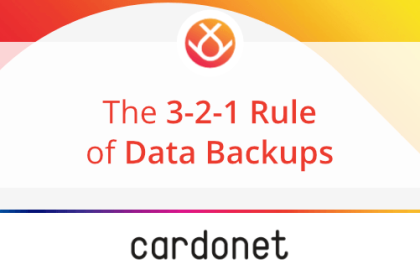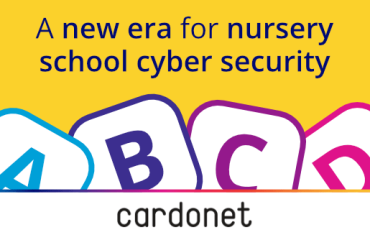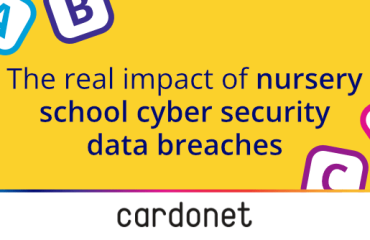
The importance of data can’t be understated ─ from keeping track of customer information to providing the material for sales forecasts, it’s the bedrock of any modern business.
Data today is mostly digital. That’s a good thing ─ it means that you don’t have to worry about a klutzy employee spilling coffee on a contract and rendering it illegible. However, just because you don’t have to worry about some files being misplaced doesn’t mean that nothing can go wrong.
That information might get lost, corrupted, or stolen. Obviously, good training and strong cyber-security protocols play a huge role in preventing that from happening, but there is always the risk that something goes wrong, whether that be the result of human error or determined hackers.
If something does go wrong, you want to be sure that you have access to your business-critical data. That’s why experts suggest that every business implements the 3-2-1 rule for data backups.
The 3-2-1 Rule for Data Backups
You should have three copies of your data ─ two of which should be on-site, on different media, while the last should be kept off-site. Think of this as the golden rule of backing up your data. Anything more is extra safety (and, I will say, should be encouraged), but anything less is a massive risk for your business.
In other words, if you have no data backup strategy, this is where to start. Let’s have a more detailed look at each part.
The 3-2-1 Data Backup Rule: Keep three copies of your data.
This is the foundation of the rule ─ you should have three copies of your data.
An external storage device is likely to be an external hard drive, but it could also be a USB drive, a cloud storage device or even a compact disc.
You’ll need to keep making copies of your backed up data. You wouldn’t want to find yourself relying on one of your three copies, only to find out that it was last updated months ago ─ that means that you’ve lost months of information.
You’ll also need to make sure that none of the devices are connected to each other. This might mean, for example, never plugging Copy #1 (e.g. an external hard drive) and Copy #2 (e.g. a USB drive) into the same computer at the same time. Not doing so risks having two of your copies damaged at once, which is not the kind of 2-for-1 deal that you want.
The important thing to remember is that you need three copies. That way, if something happens to one, or even two, the catastrophe is mitigated.
The 3-2-1 Data Backup Rule: Your backups should be on at least two different types of media.
Storing your backups on different types of media helps protect against loss due to hardware failure or other issues. For example, you could have one backup stored on an external hard drive and another stored on a USB flash drive, compact disc, or cloud backup service.
This is another failsafe: if something goes wrong with one of your types of media, you still have a backup. Say, for example, your external hard drive is damaged ─ you still have your USB available, or your data is still safe in the cloud.
Or, similarly, say your cloud backup service goes bankrupt, or simply damages your files ─ you can still access your business-critical data through your external hard drive.
I should note, though, if something happens to one type of media you should immediately ensure that you replace it with another. Imagine your external hard drive gets a virus and you lose all that data. You still have, say, your USB, so you’re fine. However, if you don’t get a new type of media to replace the one you lost, you run the risk of losing your data if something then happens to your USB.
The lesson here is that you need to make sure that you keep following the 3-2-1 rule once you implement it.
The 3-2-1 Data Backup Rule: Keep at least one copy off-site.
Finally, you should keep one copy in a different location from that of your primary storage device and backups.
Storing a backup of your data offsite means that if a disaster, such as a fire or flood, destroys your primary storage device and backups stored on-site, you still have a backup that is safe and secure.
These sort of events ─ the kind called ‘Acts of God’ by insurance companies ─ are unpredictable and can be devastating. While you might think that your data is the last of your worries if, say, you are struck by an earthquake, having your data safe and retrievable means that you are able to get your business running far quicker than if you don’t.
If your business is a small operation, that might mean keeping a copy secure in your house. However, you could also store it in a safe deposit box or use a cloud backup service to store it remotely.
This is a final failsafe that will only be needed in a worst case scenario ─ that said, if a worst case scenario does happen, you don’t want to be unprepared.
The 3-2-1 rule for data backups is an effective way to protect your important data from loss or corruption. By keeping at least three copies of your data, storing backups on different types of media, and keeping at least one copy of your data offsite, you can ensure that your data is safe and secure. Remember to create regular backups and test them regularly to ensure they are reliable and effective.
We at Cardonet provide expert IT support to businesses and have two decades’ experience doing so.
We provide expert support for outsourced data backups so that you can rest assured that your data is in safe hands – if you’d like to hear how we can help you, please don’t hesitate to request a quote. Otherwise, you can reach out to us today on +44 203 034 2244 or +1 323 984 8908.
We provide 24/7 coverage throughout the United States, United Kingdom, and Europe.



You must be logged in to post a comment.